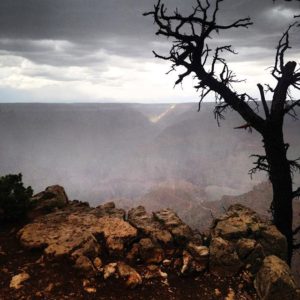(A condensed version of this study appears in my book Narrative Madness, which you can acquire at narrativemadness.com or on Amazon.)
I know a very talented individual who adapts literary works, produces and directs them, designs staging, lighting and costumes, casts the characters, plays every last one of them and sometimes adds music and special effects. This whirlwind artist accomplishes all this effortlessly, while sitting around the house in underwear and a t-shirt. That genius, my friend, is you!
 When a writer walks away from a text, she vanishes. Roland Barthes calls this “The death of the author.” The death of the author, however, is the birth of the reader! So, let me be the first to congratulate you as you step in for the author and rewrite everything, animate the work and perform the text. A piece of writing, like a music score, is a set of mute symbols until it is played. Only then does it come alive.
When a writer walks away from a text, she vanishes. Roland Barthes calls this “The death of the author.” The death of the author, however, is the birth of the reader! So, let me be the first to congratulate you as you step in for the author and rewrite everything, animate the work and perform the text. A piece of writing, like a music score, is a set of mute symbols until it is played. Only then does it come alive.
Continue reading “The Reader as Screenwriter, Producer, Director, Set Designer, Lighting Designer, Casting Director, Costume Designer and Actor (Part I)”


 Forests have fallen to explain The Waste Land. And yet, many readers express frustration, which never fully goes away, no matter how many papers and books they read. Once someone begins to read the poem, it is difficult to know where to stop: the preface, the note on the text, the poem itself, the author’s footnotes, the editor’s footnotes, the sources alluded to, the literary criticism, the guides, the biographies, the bibliographies, the early drafts? There is no back cover to this book. One could go on reading The Waste Land until the Holy Grail was found.
Forests have fallen to explain The Waste Land. And yet, many readers express frustration, which never fully goes away, no matter how many papers and books they read. Once someone begins to read the poem, it is difficult to know where to stop: the preface, the note on the text, the poem itself, the author’s footnotes, the editor’s footnotes, the sources alluded to, the literary criticism, the guides, the biographies, the bibliographies, the early drafts? There is no back cover to this book. One could go on reading The Waste Land until the Holy Grail was found.